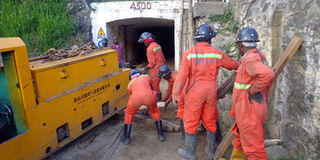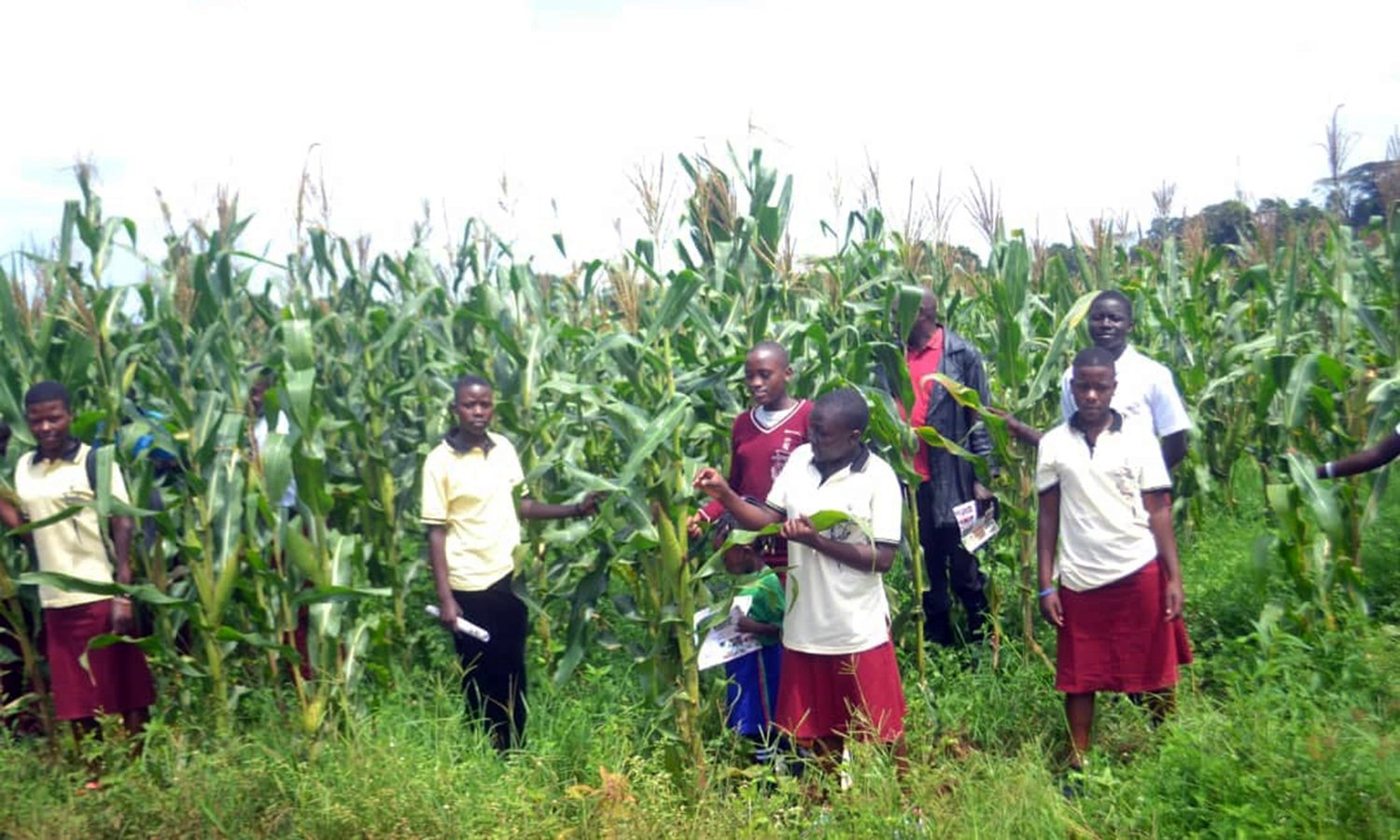Kasese leaders raise red flag over encroachment on Kilembe mines

Idle. Tibet Hima Mining Company workers operate a locomotive at Kilembe mines in 2013. Part of the land is currently being encroached on by the surrounding community after the company’s contract was terminated barely three years later. PHOTO BY MORIS MUMBERE.
What you need to know:
- Production. According to several accounts, at least 90,000 tonnes of copper ore were mined from Kilembe in the 1960s and 1970s, which was also home to all ethinic groups, including expatriates who moved and settled to Kasese for employment.
Things fall apart. During the 1970s, production at Kilembe peaked at around 18,000 tonnes of copper cathode a year. - However, things started falling apart after president Idi Amin’s nationalisation policy, which also saw most expatriate workers, especially Asian, many of whom were Ugandan citizens, flee.
Kasese leaders have raised a red flag over the rampant encroachment and degradation of the mineral-rich land at Kilembe mines.
Kilembe Copper Mines Limited, the largest copper mine in the country, covers more than 128 square miles of land.
But part of the land is currently being encroached on by the surrounding community.
The mines used to be a beehive of activities at the height of the copper and cobalt production more than 30 years ago before business slowed down.
But in September 2013, government signed a concession of 25 years with Tibet Hima Mining Company to take over copper and cobalt mining at the factory.
However, barely three years later, the contract was terminated over alleged incompetence by the investor.
Following the government’s termination of the concession, local communities took advantage of the situation to encroach on the land for agriculture and settlement.
“We are worried by the rate at which the residents are cutting down the trees that were planted by the management [of the mining company]. All the hills have been left bare because of cutting down eucalyptus trees” Mr Benon Tabaro, the Kilembe Mines Ltd acting executive director, told Daily Monitor in an interview on Monday.
The communities need to be conscious of the environmental degradation that has already been done on potential mining areas, Mr Tabaro noted.
According to environmentalists, people have encroached on areas where cultivation is not supposed to take place.
“We have replanted trees but people have gone ahead to uproot them,” he said.
Mr Richard Bomera, the district councillor for Bulembia Division, admitted that land grabbing has persisted even when government had given out a concession to Tibet Hima.
However, Ms Lillian Kisembo, the senior assistant town clerk for Bulembia Division, said they uprooted the eucalyptus trees that were planted by Kilembe mines management because they were planted on the river banks.
“We [division] are behind the uprooting of the eucalyptus trees since they are being planted in wrong areas. If you want to plant trees, come to the division so that we give you the specific specie (to plant). We discourage the planting of eucalyptus trees in wet lands,” Ms Kisembo said.
Col Philip Mugarura, the security overseer of Kilembe Mines Ltd, said government is concerned about land grabbing and cutting down of trees because they are used to hold tunnels in the mines.
“When the mines resume, there will be no trees to use in the mines since eucalyptus trees were treated and taken underneath to support the mines. But as you can see now, the whole area is bare and if it rained now, you would see running water sweeping away all the gardens,” col Mugarura said.
The Minister of Energy and Mineral Development, Ms Irene Muloni, last week visited Kasese District and advised the people of Kilembe to plant trees as one way of protecting the environment.
Kilembe mines in the past
Production. According to several accounts, at least 90,000 tonnes of copper ore were mined from Kilembe in the 1960s and 1970s, which was also home to all ethinic groups, including expatriates who moved and settled to Kasese for employment.
Things fall apart. During the 1970s, production at Kilembe peaked at around 18,000 tonnes of copper cathode a year.
However, things started falling apart after president Idi Amin’s nationalisation policy, which also saw most expatriate workers, especially Asian, many of whom were Ugandan citizens, flee.
Closing operations. But in effect, the mines ceased operations in 1978 as a result of the armed anti-Amin struggle coupled with a steep fall in prices of the copper ore.
From 1978 to 1982, the mines were placed under the care and maintenance of KML, which was now State-owned.



